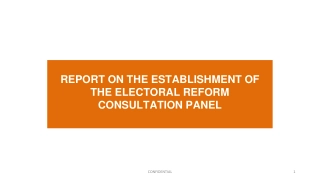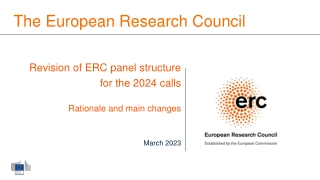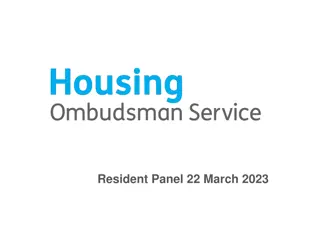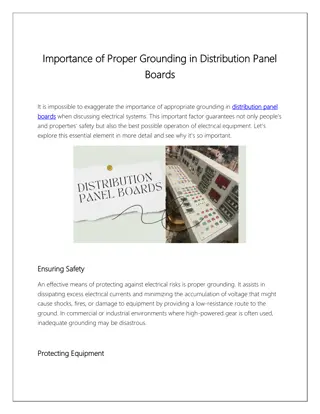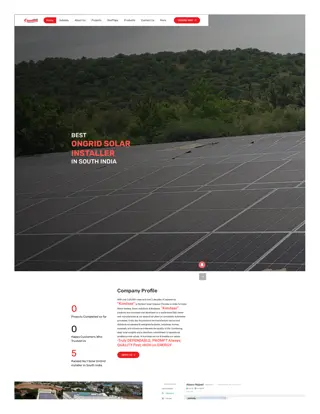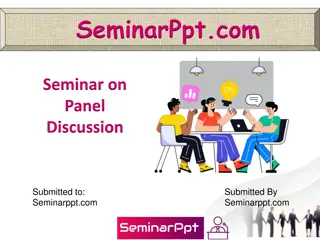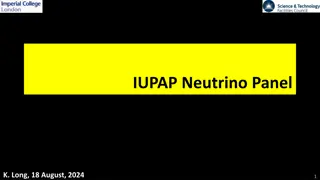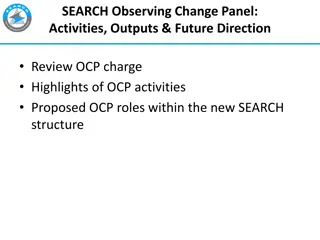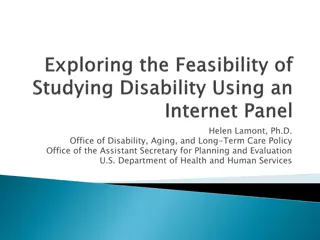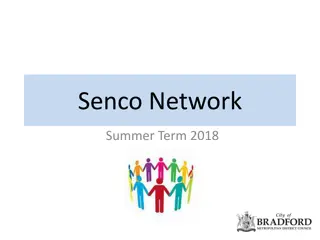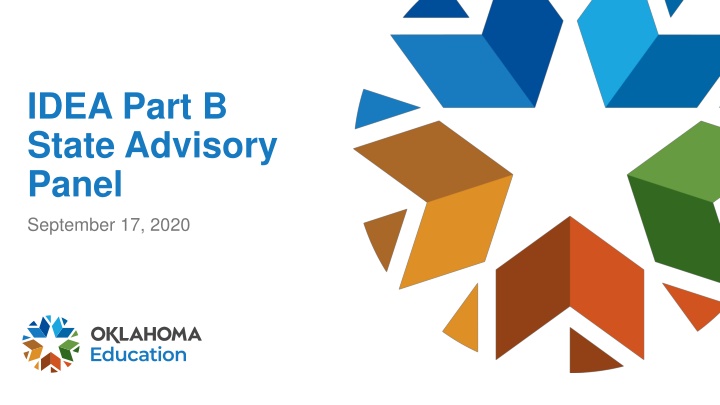
Panel Priorities for Special Education Virtual Learning 2020-2021
Explore the priorities set by the IDEA Part B State Advisory Panel focusing on virtual learning for students with disabilities. The panel emphasizes evidence-based practices and addresses key areas such as curriculum, assessments, accessibility, and safe learning environments. Recommendations will be based on learner needs, outcomes, and effective instruction to enhance accessible curriculum delivery.
Uploaded on | 0 Views
Download Presentation

Please find below an Image/Link to download the presentation.
The content on the website is provided AS IS for your information and personal use only. It may not be sold, licensed, or shared on other websites without obtaining consent from the author. If you encounter any issues during the download, it is possible that the publisher has removed the file from their server.
You are allowed to download the files provided on this website for personal or commercial use, subject to the condition that they are used lawfully. All files are the property of their respective owners.
The content on the website is provided AS IS for your information and personal use only. It may not be sold, licensed, or shared on other websites without obtaining consent from the author.
E N D
Presentation Transcript
IDEA Part B State Advisory Panel September 17, 2020
AGENDA 12:30 1:00: Registration 1:00 1:15: Welcome Linda Jaco 1:15 1:30: Panel Priorities Penny Cantley 1:30 2:00: State of Special Education Todd Loftin 2:00 2:15: Break 2:15 3:30: Priority 1 Virtual Learning 3:30 4:00: Closing 2 IDEA B State Advisory Panel Meeting 6/11/20
Welcome and Introduction 3 IDEA B State Advisory Panel Meeting 6/11/20
Panel Priorities for 2020-2021 4 IDEA B State Advisory Panel Meeting 6/11/20
Panel Priorities Main Priority - virtual learning for students with disabilities. Focusing on evidence-based virtual learning practices will allow the panel to address four priorities panel members identified in the survey completed during September/October. Those priorities include: 1. Virtual Learning (curriculum, assessments, what works, access to resources) 2. COVID-19 (academic achievement and Increased accessibility) 3. Equity in Accessing Curriculum (general education and curriculum support for special education teachers) 4. Safe and Healthy Learning Environments Focusing on these four priorities will also help address the need for accessible curriculum for students receiving services in alternative placements including juvenile correction facilities. Panel recommendations will be based on learner needs and outcomes, accessibility, deliverability, and effective instruction. 5 Presentation Title
State of Special Education 6 IDEA B State Advisory Panel Meeting 6/11/20
Topics Child Count Special Education Determinations Monitoring for Compliance and Results State Systemic Improvement Plan Deaf Education Survey Alternate Assessment Waiver Fall 2020 Survey 7 Presentation Title
Child Count by Disability Child Count 1 40,000 FY 2020 FY 2021 38,491 37,498 30,000 20,000 21,837 21,550 19,584 19,383 14,131 13,855 10,000 1,680 1,723 1,536 1,538 7,972 7,760 4,071 3,880 6,613 6,325 366 368 244 240 701 700 23 25 0 19/20 116,879 20/21 115,215 8 Presentation Title
2020 7,760 2021 7,972 Child Count 2 Autism Deaf-Blindness Developmental Delays Emotional Disturbance Hearing Impairment Intellectual Disabilities Multiple Disabilities Orthopedic Impairments Other Health Impairments Specific Learning Disabilities Speech or Language Impairment Traumatic Brain Injury Visual Impairment TOTAL 23 25 21,837 4,071 1,536 6,613 1,723 366 19,383 38,491 14,131 244 701 116879 21,550 3,880 1,538 6,325 1,680 368 19,584 37,498 13,855 240 700 115215 9 Presentation Title
Child Count 3 2020 13,512 2021 14,320 2 or More Races 2020 2021 Asian 1,059 1,094 3-5 10,057 9,042 Black 11,232 10,569 6-21 106,822106,173 Hispanic Native American Pacific Islander White 16,079 18,005 250 56,742 16,268 17,398 248 55,318 TOTAL 116,879115,215 10 Presentation Title
Determinations - 1 Dropped Improved Same 2020 Results Level 1 Support Level 2 Support Level 3 Support Total Count 2020 Totals by Level 330 166 48 544 2019 Totals by Level 2019 Results Level 1 Support Level 2 Support Level 3 Support 167 140 21 65 79 22 17 21 249 240 52 9 1 Level 4 Support 1 11 Presentation Title
Determinations - 2 2019 Results 2020 Results Level 1 Support 249 Level 1 Support 330 Level 2 Support 240 Level 2 Support 166 Level 3 Support 52 Level 3 Support 48 Level 4 Support 1 Level 4 Support 0 12 Presentation Title
Determinations -3 From 1 to 2: (drop) From 1 to 3: (drop) From 2 to 3: (drop) From 4 to 3: (improved) From 3 to 2: (improved) From 3 to 1: (improved) From 2 to 1: (improved) Stayed level 1: Stayed level 2: Stayed level 3: 65 17 21 1 22 21 140 167 79 9 13 Presentation Title
Monitoring for Compliance and Results - 1 Differentiated Monitoring GSS 2020 Compliance and DMR Presentations Differentiated Monitoring System - Level 2 Support Presentation Differentiated Monitoring System - Level 2 Support Presentation Recording Differentiated Monitoring System - Level 3 Support Presentation Differentiated Monitoring System - Level 3 Support Presentation Recording Differentiated Monitoring System - Indicators 4 9 10 Presentation Differentiated Monitoring System - Indicators 11 12 13 Presentation 14 Presentation Title
15 Presentation Title
Monitoring for Compliance and Results - 2 GMS - December 31, 2020 (Levels 2 and 3) Implement & monitor plan January May 2021 (Levels 2 and 3) 1st Progress Monitoring March 31, 2021 (Level 3) Submit PD - May 31, 2021 (Levels 2 and 3) 2nd Progress Monitoring May 31, 2021 (Level 3) Data Retreat TBD (Level 3) Targeted or Comprehensive Monitoring will be scheduled in the Spring of 2021. (Level 3) 16 Presentation Title
State Systemic Improvement Plan (SSIP) Our original reboot of our SSIP was rejected by the Office of Special Education Programs (OSEP). We are now required to revisit our outcome of interest and our proposed activities. We will be holding stakeholder meetings over the next couple of months to present data and gather feedback. Please participate when possible. 17
SSIP SIMR and Population The outcome focus would still be Assessment. Target population: the Additional Targeted Support and Improvement (ATSI) schools that are identified due to low performance of special education students. Goal: Create an "Agency Plan" (SES, SPDG, School Support, Instruction) to increase student academic outcomes among selected target schools Evidence-based practices to be determined. 18
SSIP: Infrastructure Improvement Oklahoma Interconnected Systems Framework (OK ISF) The Oklahoma Interconnected Systems Framework would be structure used to align our efforts, build resources, and implement the plan. Purpose of OK ISF To allow for and foster alignment of educational and improvement endeavors, reduce duplicative efforts, promote the use of common language, and improve collaboration at the OSDE. 19
SSIP: OK ISF The OK-ISF Team has broad interdepartmental representation Office of American Indian Education; Office of College & Career Readiness; Office of Counseling, Bully Prevention, & Alternative Education; Office of Curriculum and Instruction; Office of Educator Effectiveness; Office of Family and Community Engagement; Office of School Safety & Security; Office of School Support & Improvement; Office of SoonerStart & Early Intervention; and Office of Special Education Services. 20
SSIP Stakeholder Survey Responses 223 total responses 38% Special Education Directors 18% Special Education Teachers 19% LEA Administrators 2% General Education Teacher 4% Service Provider 3% Parent 1% Community Member 2% OSDE 10% Other Across the state 29% from Central Oklahoma 27% from Northeast Oklahoma 21% from Southeast Oklahoma 12% from Southwest Oklahoma 9% from Northwest Oklahoma Note: We have not sent out through OPC s listserv yet, so our Parents and Community Member responses will increase. 21 Presentation Title
SSIP Stakeholder Survey Concerns Currently: 66% report literacy as largest concern 23% report early childhood transition as largest concern 7% report graduation rates as largest concern 3% report math skills as largest concern Other concerns noted: Trauma, Social-Emotional Needs, Behavior, Caseload, Mental Health, Life Skills, Technology, RTI, MTSS, Equity, State Testing, Discipline 22 Presentation Title
Deaf Education Survey 155 districts responses Key areas of concern Need for professional development across the state Not aware of and/or utilizing resources from the Oklahoma School for the Deaf 23 Presentation Title
Alternate Assessment Waiver Waiver is for exceeding the 1% cap on participation. 2018 1.67% 2019 1.65% 2020 1.33% 1.41% (estimate) Waiver - https://sde.ok.gov/sites/default/files/Waiver%202021%20Post ed%20for%20Public%20Comment%2011022020.pdf 24 Presentation Title
Oklahomas definition of students with the most significant cognitive disabilities Developed by a stakeholder group in 2017. Purpose: Resource for school staff and IEP team members when determining if AA-AAAS is appropriate for SWD. Part of Requirement 4 (A) ( 200.6(c)(4)(iv)(A)): Definition may require revision. Does this definition adequately capture student characteristics? Can the changes improve participation guidelines? 25 Presentation Title
State Definition of students with the most significant cognitive disabilities 34 CFR 200.6(d)(1) Students with the most significant cognitive disabilities have limited conceptual skills, written language skills, and understanding of numerical concepts such as quantity, time, and money. Vocabulary and grammar are quite limited and augmentative communication devices are often necessary to communicate with others. They tend to focus on present, everyday events and rarely attempt to analyze or expand on new ideas and concepts through spoken language. Skill acquisition and measurable gains on grade-level alternate academic achievement standards require extensive, direct individualized instruction. These students require substantial supports for all activities of daily living including meal preparation, dressing, grooming, and personal hygiene. Their personal safety is dependent upon constant supervision and will be a concern throughout their lifetime. 26 Presentation Title
Priority 1 Virtual Learning 27 IDEA B State Advisory Panel Meeting 6/11/20
Virtual Learning State Perspective Large Group Share SWOT Analysis 28 Presentation Title
Fall 2020 Survey - 1 This survey was conducted to gather success stories and report on promising resources, initiatives, and activities in districts related to the teaching and learning of students with disabilities during the Fall of 2020. 29 Presentation Title
Fall 2020 Survey - 2 Successes Valuable Resources Parent Involvement Progress Monitoring Student Participation Curriculum Accommodations Teacher Collaboration Transition Services Remaining Struggles 30 Presentation Title
Successes Students are wearing masks better than expected. Resiliency of teachers. Virtual meetings have facilitated parent and team participation as parents can participate without being physically present at the meeting. Positive behavior rewards and consistency in schedules to improve behavior. Using a chart to track daily progress with several students. Students have access to more accommodations for their assignments. Teachers and students have developed better digital literacy. Collaboration between teachers has increased tremendously. Everyone is working together to make things work for every student. Students are highly motivated and happy to be back in school. The ability to enhance student instruction with the use of technology and embed those standards into everyday curriculum. 31 Presentation Title
Valuable Resources Google Classroom Boom Cards Screncast-o-matic SeeSaw MobyMax Screencastify IXL Edmentum / Exact Path Alpha Plus Hear Builder Studies Weekly Xtra Math Feckle Myon.com Trello Schoology Attainment Curriculum Study Island Presentation Title 32 Zoom Sphere 2 YouTube Unique Learning System and News 2 You Interactive Math Notebooks DocuSign Kahoot Professional Development Acellus Spelling City Lalio Facebook SPED Groups Zearn Reading Horizons Bookshare AGS Textbooks Boardworks and Syter-Fitzgerald Master the Standards
Parent Involvement Working to ensure that all parents have access to EdPlan Connect. Using the remind app and the school s Facebook page to update parents and students on information for all. Parent Teacher Conferences being conducted via email and phone calls have increased participation, with many teachers saying they had 100% participate. Many parents also said they preferred these conferences over in-person conferences. 33 Presentation Title
Progress Monitoring STAR, Early Literacy, AR, IXL, Dibels, and Exact path, along with Wide Range Achievement Test to help determine performance levels. Using student work samples and grades to monitor their progress in their classes. The QR code system has helped several teachers capture data more efficiently. Renaissance Star and NWEA Map testing have been beneficial for benchmarking/progress monitoring. Constant contact and collaboration with parents, therapists, and teachers. Shared google documents.. 34 Presentation Title
Student Participation This is a challenge Interaction Participation Mixed Results 35 Presentation Title
Curriculum Edmentum SeeSaw ULS/N2Y OATECA for self-contained students Unique Learning System / News 2 U Exact Path IXL Study Island Moby Max PearDeck Edgenuity iStation Khan Academy Kipp Wheatley Accellus Boardworks Odysseyware Alpha Plus Edoptions HMH Social Studies, Journeys AGS Textbooks Calvert 36 Presentation Title
Accommodations Using Natural Reader for text to speech, Bookshare and Mathshare for reading and math aides. Chromebooks with features such as voice to text, text to voice, enlarged print, highlighting, etc. Setting up daily Zoom times throughout the day at each site so virtual students can log in and actually see their teacher, get help, accommodations, or whatever else they may need. 37 Presentation Title
Teacher Collaboration Daily/weekly meetings data driven Meeting with virtual students one on one Special Ed/General Ed meeting more frequently 38 Presentation Title
Transition Students in contact with special education teachers Lessons with leadership teachers Exploring career options online 39 Presentation Title
Remaining Struggles Student engagement and attendance Supports for VI Contacting families Curriculum Lack of internet service Providing compensatory services 40 Presentation Title
SWOT 1 Strengths Factors that are likely to have a positive effect on (or be an enabler to) achieving the school s objectives Weaknesses Factors that are likely to have a negative impact on (or be a barrier to) achieving the school s objectives Opportunities External Factors that are likely to have a positive effect on meeting or exceeding the school s aims, or goals not previously considered Threats External Factors and conditions that are likely to harm achieving the school s objectives or making the objective redundant or unachievable. 41 Presentation Title
SWOT 2 Strengths Weaknesses Opportunities Threats Internal Internal External External Positive Negative Positive Negative 42 Presentation Title
Wrapping Up Public Comment Next Meeting and Orientation 43 IDEA B State Advisory Panel Meeting 6/11/20

